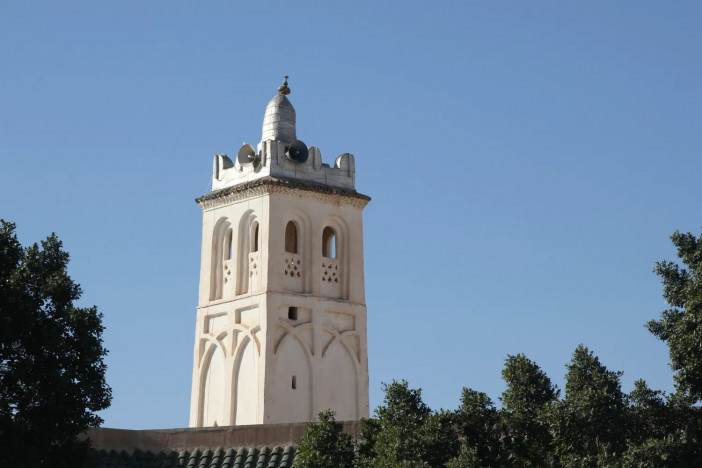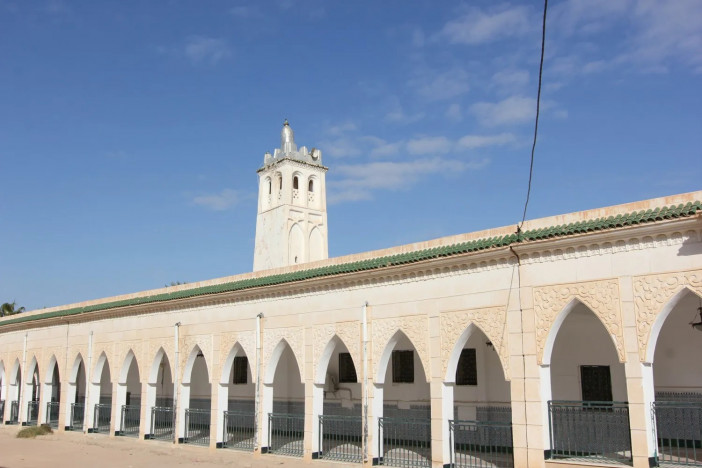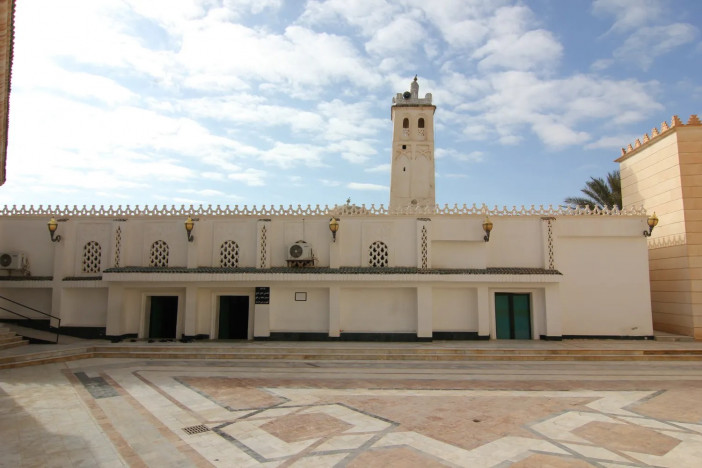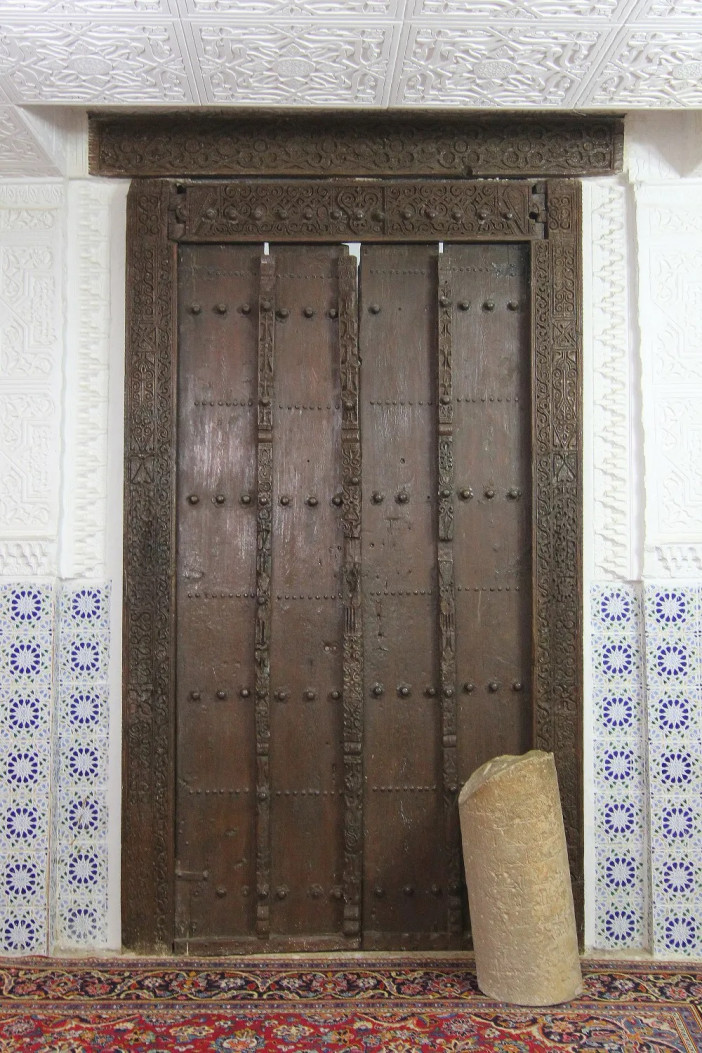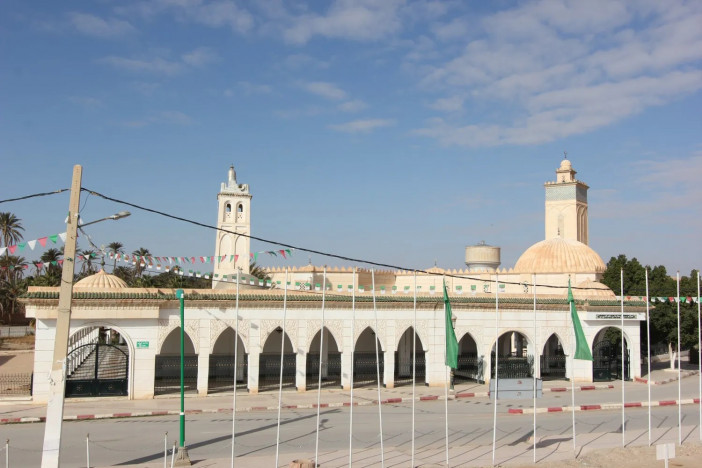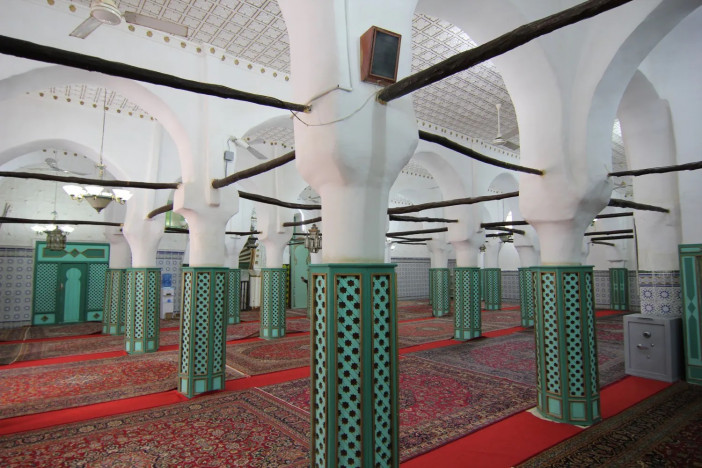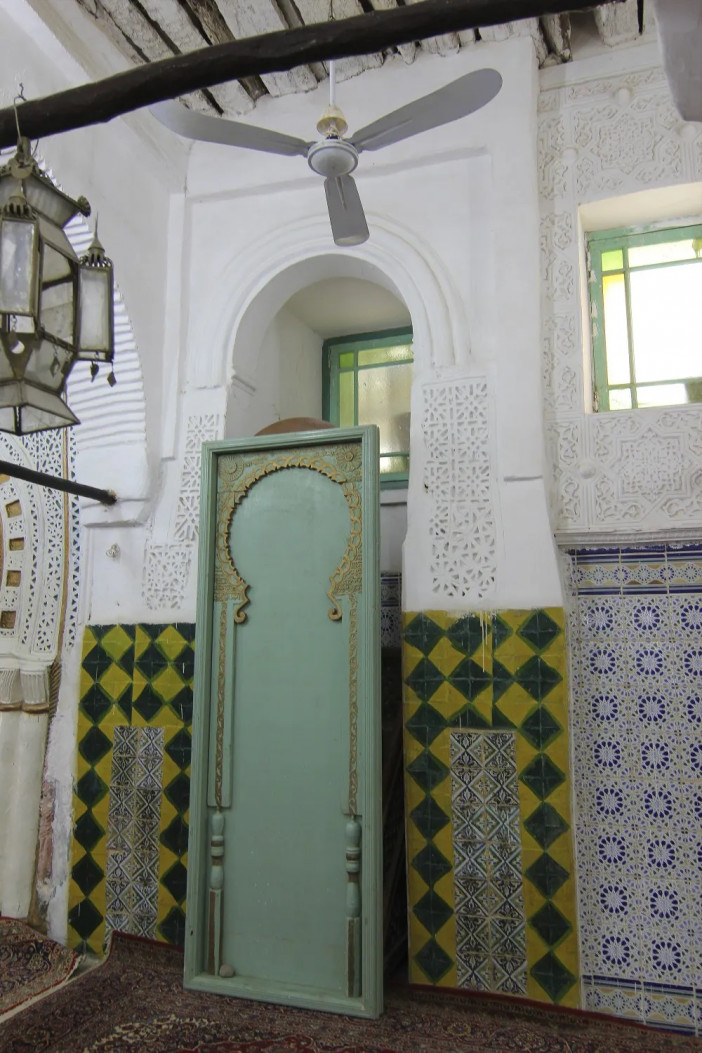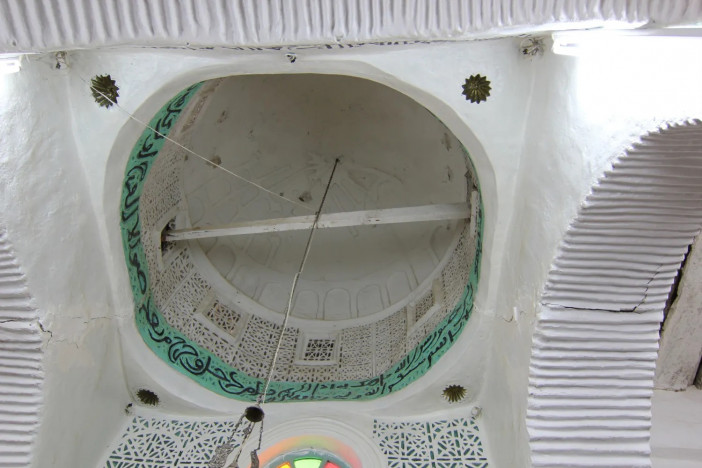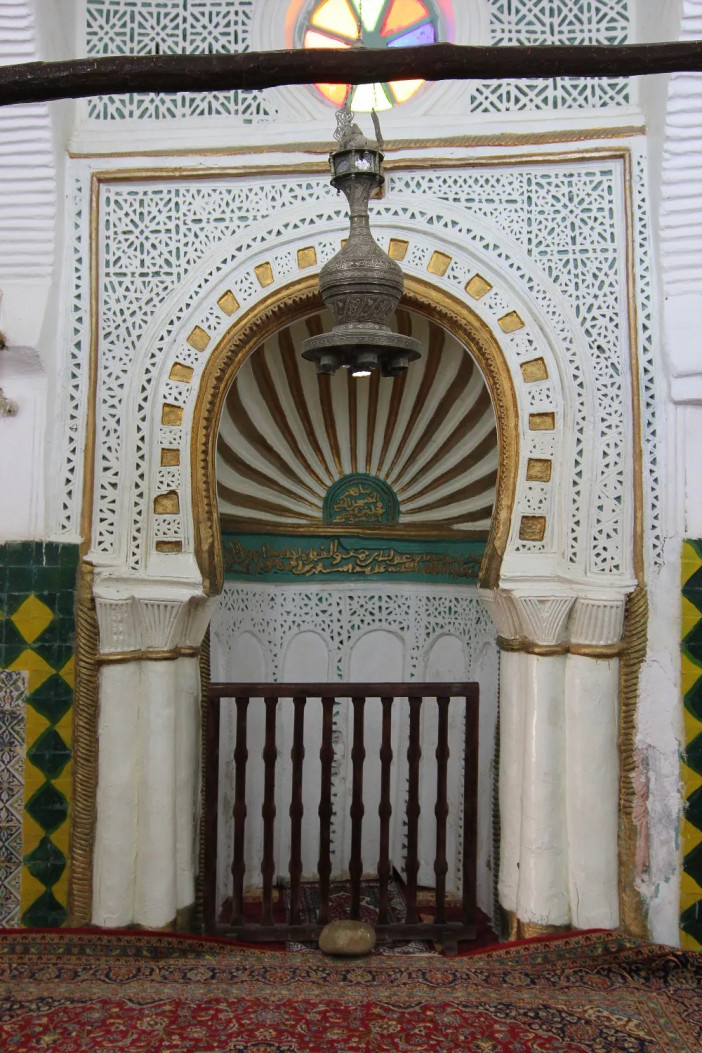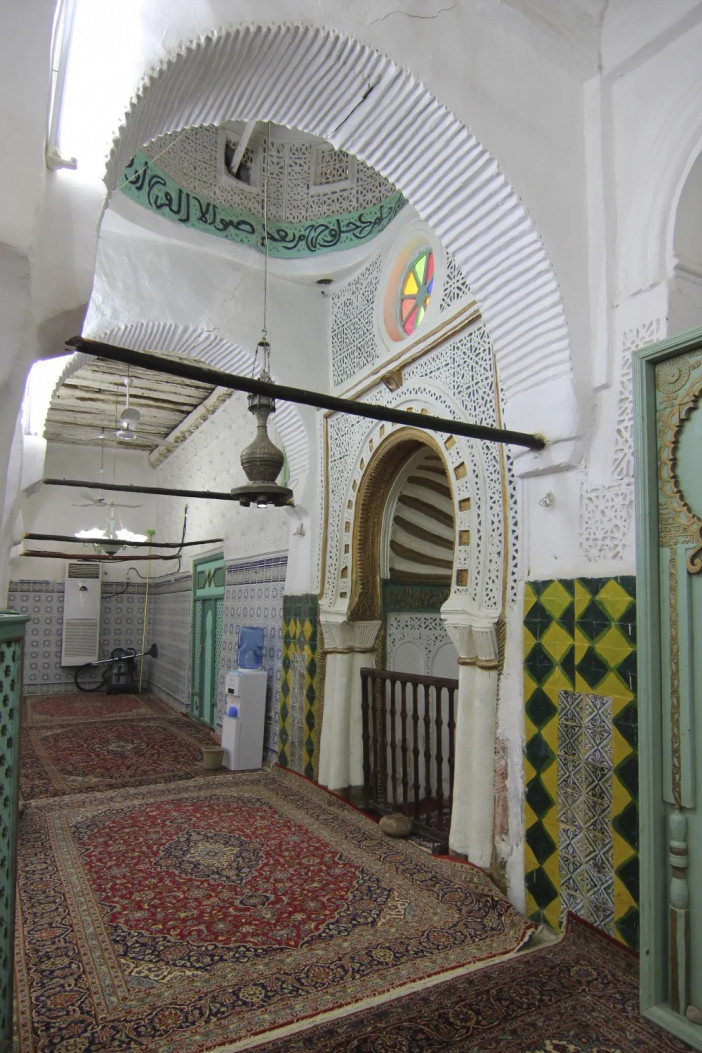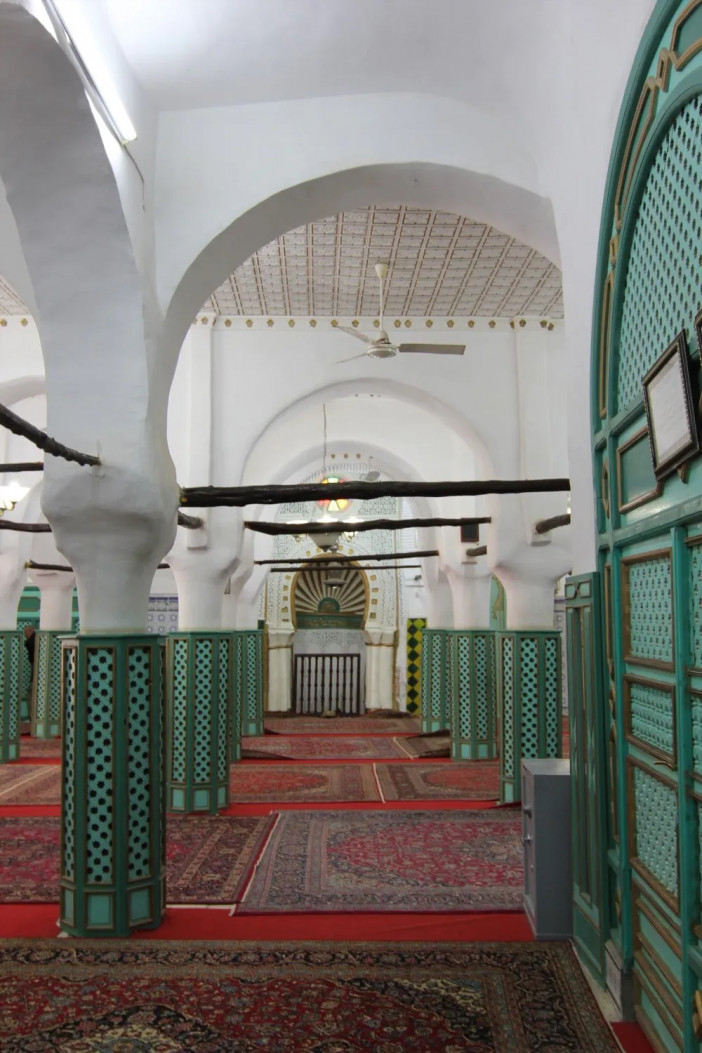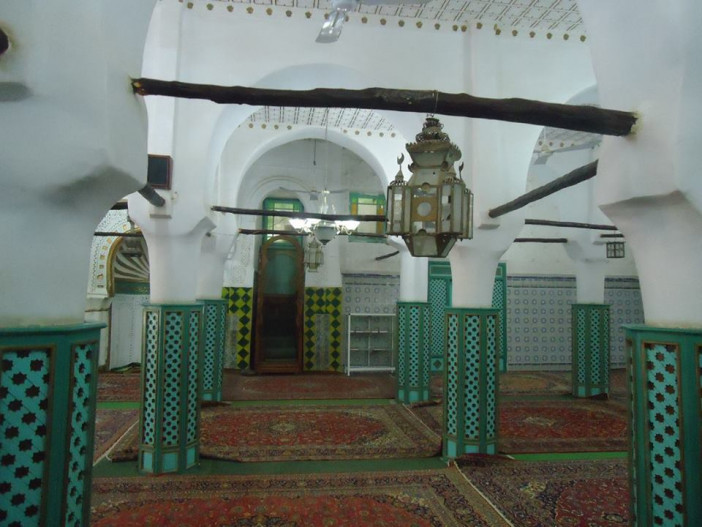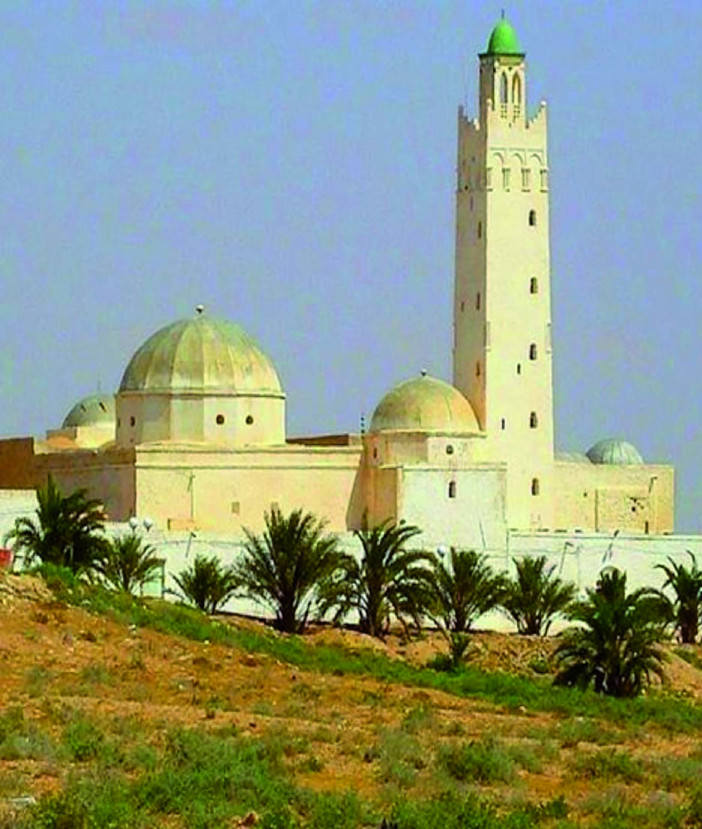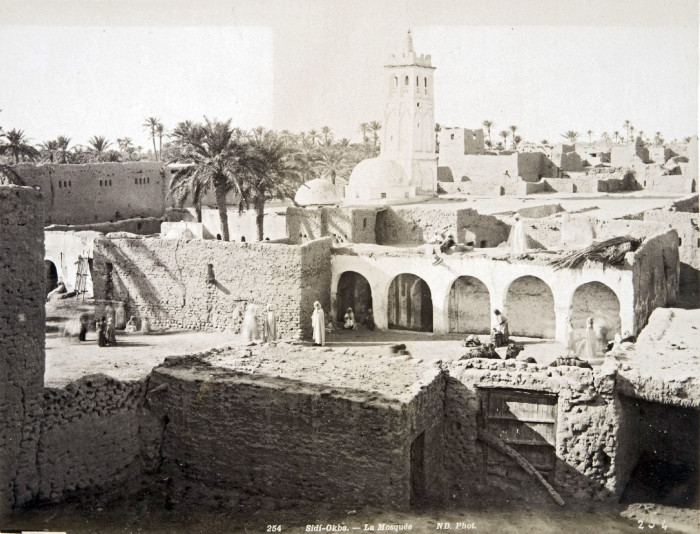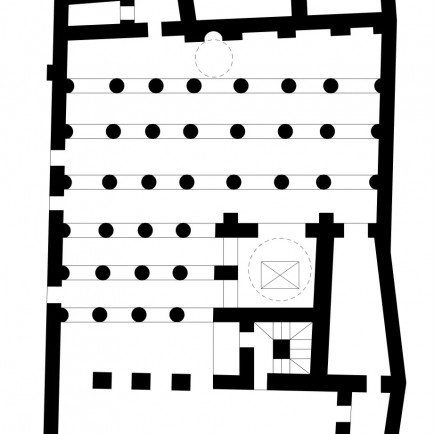Mosque of Sidi Okba
History
Masjid Sayyidi 'Uqba was constructed upon the gravesite of 'Uqbah ibn Nafi,' the Arab general who oversaw the Islamic conquest of the Maghreb in the first century of the Hijra, 20 kilometers from Biskra. It is Algeria's oldest mosque that is still in use.
Urban and Architectural
The mosque is a part of a sizable complex that was constructed around the burial of Oqba Ibn Nafaa, the governor of Ifriqiya. One of the oldest mosques in North Africa, this building exemplifies Middle Eastern design. Over time, it developed into a center of cultural and theological influence that produced eminent Muslim thinkers. The earliest mosque erected in Medina served as the model for its design. Al-Mu'izz ibn Bâdîs, the Zirid king, expanded it in 1025.
There are three lateral doors that lead to the prayer hall (Prayer hall 23.8 x 21.4 m). The parallel seven naves each feature seven bays. This transverse design, which dates back to the Umayyad era, is not only the most traditional but also the best for Muslim prayer. The columns constructed of palm trunks support the horseshoe-shaped arches, which are held in place by wooden tie rods. This is the sole instance of this support system in Algeria. It is undoubtedly derived from Medina, although it is also widespread in Central Asia and can be seen in several mosques in Anatolia from the thirteenth century. Except for the area bordering the dome, where they are vaulted, the ceilings are terraced. This specificity suggests that the mosque was most likely not constructed all at once.
Description
The dome before it and the mihrab are composed of stone and plaster with red and green paint accents in certain areas. A horseshoe-shaped arch leads into the niche. It is topped by a fluted cul-de-four that is semi-circular in shape and is based on the conch motif used to embellish semi-circular spaces in ancient times. This ornament is already present in Islam in a mihrab that is thought to have originated in the Great Mosque of Baghdad and was built in 762 by the Caliph al-Mansur. The minbar has a carved wooden door with greenery, rosettes, and inscriptions next to the mihrâb.
The mosque was included into a huge Islamic complex in 2009. The location is now more than simply a mosque; it is a contemporary complex with a brand-new prayer hall that can accommodate 5,000 worshipers, a Koranic school, a library, a conference room, and student housing. The old mosque is no longer used as a mosque because it is encircled by porticoes. In honor of the revered "Uqbah ibn Nafi," it was transformed into a location for meditation.
References
https://www.archnet.org/sites/17008
https://fr.wikipedia.org/wiki/Mosqu%C3%A9e_de_Sidi_Okba
https://earth.google.com/web/search/Sidi+Okba,+Algeria/@34.7424403,5.93292936,45.75412404a,15404.47483214d,35y,-12.77648111h,0.87536072t,-0r/data=CncaTRJHCiUweDEyZjVhMmNjYzA2YmNmZjc6MHg4M2M5MTdlZmM4YzZlMTEzKh5BbmNpZW5uZSBtb3NxdcOpZQpkZSBTaWRpIE9rYmEYAiABIiYKJAn0aBVoTXRBQBGg0UBlI2JBQBlOiHp8-hAYQCFYEnC-GhcXQA
Details
Location
PVXW+HXH Ancienne mosquée de Sidi Okba, Sidi Okba, Algeria
Worshippers
5000
Owners
Okba Ibn Nafaa
Year of Build
686
Area
initial : 720, after extension : 7500
Drawings
Map
History
Masjid Sayyidi 'Uqba was constructed upon the gravesite of 'Uqbah ibn Nafi,' the Arab general who oversaw the Islamic conquest of the Maghreb in the first century of the Hijra, 20 kilometers from Biskra. It is Algeria's oldest mosque that is still in use.
Urban and Architectural
The mosque is a part of a sizable complex that was constructed around the burial of Oqba Ibn Nafaa, the governor of Ifriqiya. One of the oldest mosques in North Africa, this building exemplifies Middle Eastern design. Over time, it developed into a center of cultural and theological influence that produced eminent Muslim thinkers. The earliest mosque erected in Medina served as the model for its design. Al-Mu'izz ibn Bâdîs, the Zirid king, expanded it in 1025.
There are three lateral doors that lead to the prayer hall (Prayer hall 23.8 x 21.4 m). The parallel seven naves each feature seven bays. This transverse design, which dates back to the Umayyad era, is not only the most traditional but also the best for Muslim prayer. The columns constructed of palm trunks support the horseshoe-shaped arches, which are held in place by wooden tie rods. This is the sole instance of this support system in Algeria. It is undoubtedly derived from Medina, although it is also widespread in Central Asia and can be seen in several mosques in Anatolia from the thirteenth century. Except for the area bordering the dome, where they are vaulted, the ceilings are terraced. This specificity suggests that the mosque was most likely not constructed all at once.
Description
The dome before it and the mihrab are composed of stone and plaster with red and green paint accents in certain areas. A horseshoe-shaped arch leads into the niche. It is topped by a fluted cul-de-four that is semi-circular in shape and is based on the conch motif used to embellish semi-circular spaces in ancient times. This ornament is already present in Islam in a mihrab that is thought to have originated in the Great Mosque of Baghdad and was built in 762 by the Caliph al-Mansur. The minbar has a carved wooden door with greenery, rosettes, and inscriptions next to the mihrâb.
The mosque was included into a huge Islamic complex in 2009. The location is now more than simply a mosque; it is a contemporary complex with a brand-new prayer hall that can accommodate 5,000 worshipers, a Koranic school, a library, a conference room, and student housing. The old mosque is no longer used as a mosque because it is encircled by porticoes. In honor of the revered "Uqbah ibn Nafi," it was transformed into a location for meditation.


